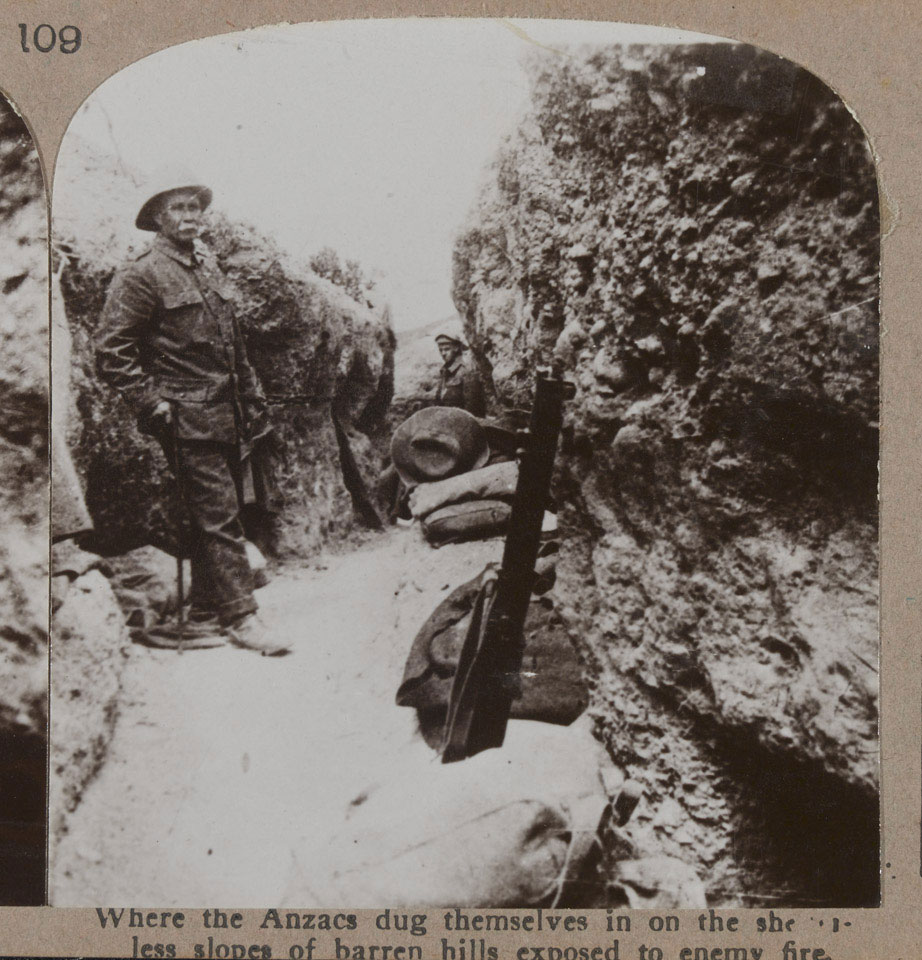
Online Collection
'Where the Anzacs dug themselves in on the shelterless slopes of barren hills exposed to enemy fire', 1915
Stereoscopic photograph, World War One, Gallipoli, 1915.
Soldiers from Australia and New Zealand, the 'ANZACs', landed near Gaba Tepe (later renamed Anzac Cove) on 25 April 1915. Despite repeated attempts to break out and link up with the landing further south at Cape Helles, the campaign became bogged down. Lieutenant-General Sir Gerald Ellison visited Anzac on 24 July 1915 and reported:
'As we approached ANZAC we could see the shore and the landing jetty being heavily shelled from both flanks and unfortunately one of the shells got home and caused serious casualties. Some 12 or 14 men being hit. Landing parties, bathers and those employed in the beach depots are never safe at any time from incidents of this kind. Of course the bulk of the landing of men and stores has to be done at night, but a certain amount goes on pretty well all day. Close to the jetty are General Birdwood's Headquarters and there is quite a town of dug outs and shelters all huddled together on the face of the small ridge of cliff about 300 feet high and 500 yards long which immediately commands the landing place...We proceeded to the top of the interior line of cliff [and] speaking roughly we had facing us on the small plateau where we stood (which is honeycombed with deep trenches) an amphitheatre of cliffs from 2 to 3 miles in extent.
The whole face of this great cliff of hard yellow mud is literally one mass of little caves occupied by the Australian and New Zealand contingents. Zig-zag paths run up the few steep salients that jut out from the cliffs to the ravine below and from these salients row upon row of paths have been cut in the face of the cliff and beyond them again are the shelters where the men live. The very summit of the cliff is our advance fire trench, and very often the Turkish trenches are not more than 15 to 20 yards away from this trench. In such circumstances the difficulties of communication can well be imagined but no one with whom I spoke seemed in the least afraid of what any Turkish attack could do. They have already beaten off two serious attacks with enormous loss and feel absolutely convinced that they can take on any number that come to attack them. I do not think I have ever met a more cheery lot of fellows than those I encountered in and around ANZAC'. NAM 1987-04-35-214
From a collection of 96 stereoscopic photographs in box two of two entitled 'The Great War'.
NAM Accession Number
NAM. 1972-08-67-2-109
Copyright/Ownership
National Army Museum, Out of Copyright
Location
National Army Museum, Study collection
Object URL
https://collection.nam.ac.uk/detail.php?acc=1972-08-67-2-109

